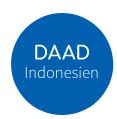ANALYSIS OF GERMAN LANGUAGE LEARNING BASED ON HYBRID LEARNING (A CASE STUDY OF GRADE X STUDENTS OF ANGKASA HUSEIN SASTRANEGARA HIGH SCHOOL)
Abstract
German hybrid learning model combines two learning methods that consist of offline and online. There are still many aspects in this learning model that need further analysis, for example student's score acquisition during hybrid learning and student's perception on German hybrid learning model as a result of empirical data which can be seen and valued. This research is conducted based on previously discussed aspects to identify: 1) 10th grade students’ result during the German hybrid learning at Angkasa Husein Sastranegara High School; 2) 10th grade students’ perception on German hybrid learning at Angkasa Husein Sastranegara High School. This research uses qualitative analysis with descriptive cases study. The result of this research's analysis determined that 1) Student's score acquisition during German hybrid learning has no significant difference overall, rather there are differences during the offline and online learning; 2) Student's perception on German hybrid learning conclude that learning goes effectively and reveal another learning environment caused by offline and online learning. Furthermore, hybrid learning model offers a student-focused learning method to help students explore insight independently. However, students find F2F learning more effective for foreign language learning, notably German. Overcoming this. requires the development of learning methods in hybrid learning.
Keywords: hybrid learning, German, perceptionFull Text:
PDFReferences
Fahrijal, M. & Zulkarnaen, R. (2022). Analysis of the effectiveness of mathematics teaching with hybrid model. Prisma Journal: Suryakancana University. doi: https://jurnal.unsur.ac.id/prisma/article/view/2051
Fathurrohman, M. (2017). Modern learning and learning: basic concepts, innovations, and learning theories. Yogyakarta: Garudhawaca.
Hartono, S, K., R, S., & H, R. S. (2018). Smart hybrid learning framework based on three layers architecture to bolster up education 4.0. International conference on ict for smart society (pp. 1-3). Semantic Scholar.
Linder, K. E. (2017). Fundamentals of hybrid teaching and learning. New Directions for Teaching and Learning, 11-18.
Mayer, R. E. (2018). Thirty years of research on online learning. 152. doi:10.1002/acp.3482
Moore, J. L., Dickson-Deane, C., & Galyen, K. (2010). E-learning, online learning, and distance learning environments: Are they the same? Internet and higher education, 130. doi:10.1016/j.iheduc.2010.10.001
O'Byrne, I. W., & Pytash, K. E. (2015). Hybrid and blended learning. Journal of Adolescent and Adult Literacy, 137-140.
Saichaie, K. (2020). Blended, flipped, and hybrid learning: Definitions, developments and directions. New directions for teaching and learning, 95-104. doi:https://doi.org/10.1002/tl.20428
Triyono, M. G., & Dermawan, D. A. (2021). Analysis of the effectiveness of using the hybrid learning model at SMK Negeri 2 Surabaya. IT-Edu: Journal of Information Technology and Education, 646-656.
Zhang, J. (2008). Hybrid learning and ubiquitios learning. Hybrid Learning and Education, 254.
Refbacks
Copyright (c) 2024 Iwa Sobara, Niken Khairunnisa S, Irma Permatawati

This work is licensed under a Creative Commons Attribution-ShareAlike 4.0 International License.
This journal provides immediate open access to its content on the principle that makes research freely available to the public and supports a greater global exchange of knowledge.
This work is licensed under a Creative Commons Attribution-ShareAlike 4.0 Internasional (CC BY-SA 4.0).




